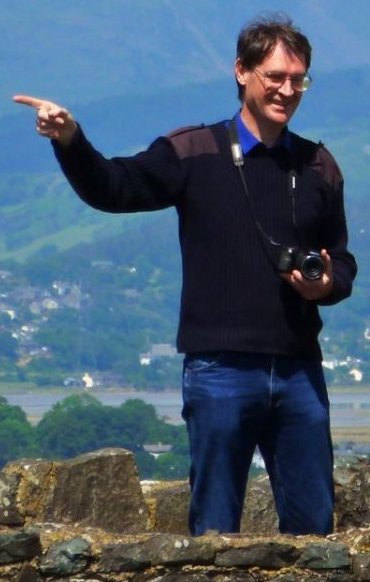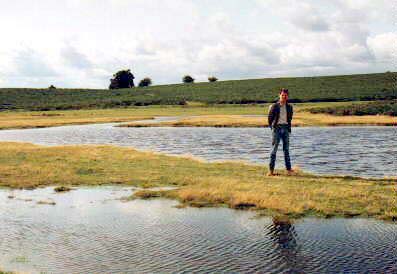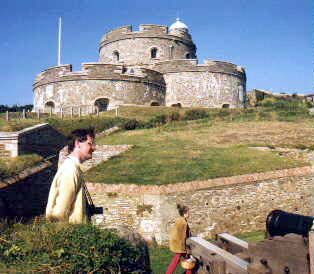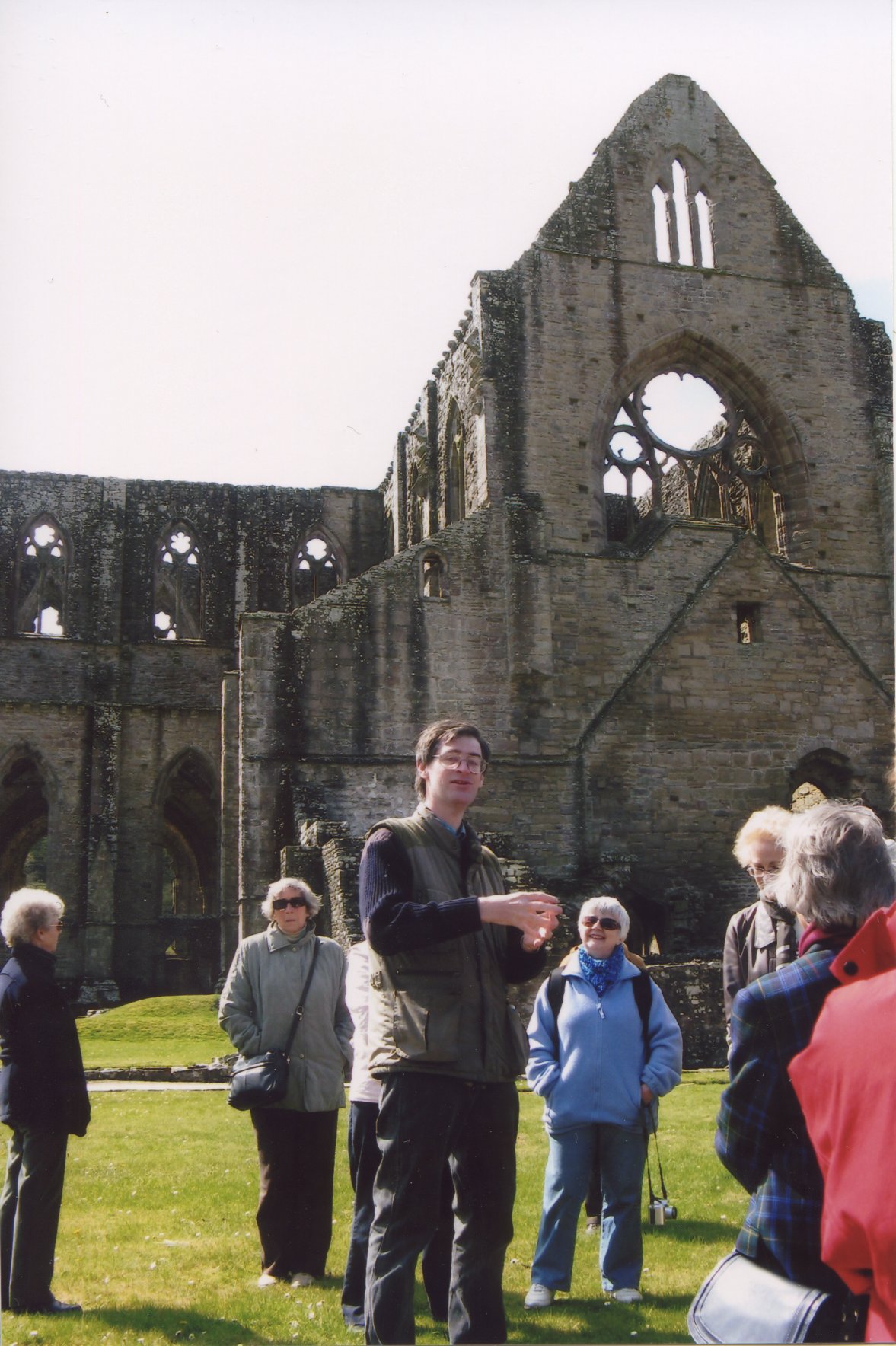Paul
Martin Remfry
 Paul
Martin Remfry has been working on
medieval history, genealogy and building analysis since 1981.
This has resulted in him publishing books and articles on the subject
for more than thirty
years. He was a founding member of the Castle Studies Group
in 1987 and is currently vice-chairman of the Mortimer History
Society. In 2010 he stood for Parliament in Cheshire.
Paul
Martin Remfry has been working on
medieval history, genealogy and building analysis since 1981.
This has resulted in him publishing books and articles on the subject
for more than thirty
years. He was a founding member of the Castle Studies Group
in 1987 and is currently vice-chairman of the Mortimer History
Society. In 2010 he stood for Parliament in Cheshire.
Biography
Having spent most of his life in Wales or the Welsh Marches, Remfry
earned a master of philosophy degree by thesis in 1989 at
Aberystwyth university. He studied under Professors Rees Davies
and
J.Beverley Smith, both respected Welsh historians. In a preface to
Remfry's book on Clifford
Castle, Davies endorsed Remfry as a "meticulous" researcher,
with a "passion" for telling the stories of castles and the people who
lived in them. Remfry has worked as an independent researcher for more
than thirty years, during which time he has published more than 20
books and 23 academic booklets on the medieval history and buildings of
Britain and Normandy. In his work, he
is known for his ability to locate and decipher source
documents from the Middle Ages written in Medieval French and Latin,
which lends an extra level of authority to his work.
Work
Remfry's expertise on medieval castles, genealogy and history is shared
with the public through several means. He leads tours of castles and
ancient sites in and near Wales, maintains two web sites on medieval
castles, has written numerous articles for academic journals such as
British Archaeology, Archaeology in Wales, Shropshire Archaeology and
History, Transactions of the Radnorshire Society, Castle Studies Group
and Woolhope Archaeological Research Section, and he lectures
throughout the United Kingdom. His website is described as
‘An excellent resource' on Medieval
English Genealogy.
Television
Remfry has appeared as an historian and castle expert on:
Dan Snow's Norman Walks: Season 1, Episode 2 , Herefordshire and
Monmouthshire: The March of Wales (11 Aug. 2010)
‘Restoration, Wilton Castle', BBC2, 2008
‘The Masters - James St Georges' for Sky History by
Circlevision, 2004
He has given talks on castles and
history for BBC Radio Hereford and Worcester and Radio Wyvern.
His talk on the Herefordshire Beacon can be found here.
Some of his published
works include
A Political Chronology of Wales
1066 to 1282 (ISBN 1-899376-46-1). This is an
annual breakdown of events taken from original sources dealing with
Wales and the English Marcher counties.
Annales Cambriae.
A Translation of Harleian 3859; PRO E.164/1; Cottonian Domitian, A 1;
Exeter Cathedral Library MS. 3514 and MS Exchequer DB Neath, PRO E.164/1
(ISBN 1-899376-81-X). This is the only
full translation of the Annales into English. The extensive introduction chronicles the creation of these
unique annals and their effect upon British history.
Berkhamsted Castle and
the families of the Counts of Mortain, the Earls of Cornwall and the
Crown (ISBN 9781899376483)
Castell Bwlch y Dinas and
the Families of Fitz Osbern, Neufmarché, Gloucester,
Hereford, Braose, Fitz Herbert (ISBN
1-899376-79-8). This book examines the early Norman
penetrations of the Welsh Marches and the peculiar refortification of a
hillfort.
Castell Carreg Cennen
and the Families of Deheubarth, Giffard, Talbot and Lancaster(ISBN
1899376). This book examines the evidence on how the
castle was most likely built by the Welsh princes of Deheubarth, rather
than an absentee landlord, who appears never to have visited the site.
This is contrary to what is often proclaimed in many current
‘histories without
evidence'!
Grosmont Castle and the
families of Fitz Osbern, Ballon, Fitz Count, Burgh, Braose and
Plantagenet of Grosmont (ISBN 1-899376-56-9). This
examines an early lordship castle in the Welsh Marches that may have
been built in stone from the first.
Medieval Battles, 1055 to 1295
(ISBN 9781899376). A detailed account built up from original
documents about how armies were formed and used. Contains
detailed discussions and illustrations of knights and their armour.
Montgomery Castle a
royal Fortress of King Henry III (ISBN
1-899376-49-6)
Moreton Corbet Castle and
the Families of Verley, Toret and Corbet (ISBN
1899376615)
Native Welsh Dynasties of
Rhwng Gwy A Hafren, 1066 to 1282 (ISBN 1899376844).
This shows the creation and destruction of a kingdom in central
Wales. Welsh History Review, Vol. 18, nos. 1-4 1996-97,
p.735-6, notes on this, "Remfry provides an important new
consideration of the career of Cadwallon ap Madog, proclaiming his
impressive power with implications for our view of the developments of
pura Walia".
The Political History of
Abbey Cwmhir, 1176 to 1282 and the Families of Elystan Glodrydd,
Mortimer and the Princes of Gwynedd (ISBN
1-899376-47-X) "This fine book is a very significant
contribution not only to Welsh monastic history, but also to our
understanding of the Middle March in those years. It deserves
to be widely read." David H. Williams, M.A., Ph.D., F.S.A.
Skenfrith Castle, 1066
to 1449 and the families of Fitz Osbern, Ballon, Fitz Count, Burgh,
Braose and Plantagenet of Grosmont (ISBN
1-899376-70-4)
The Castles and History
of Radnorshire (ISBN 1-899376-82-8).
Following on from the Logaston book on the same subject, this revisits
the project adding a plan of each castle as well as all the detailed
history which has come to light over the ten interceding
years. The book is full of history and plans.
The Herefordshire Beacon
and the Families of King Harold II and the Earls of Hereford and
Worcester (ISBN 1-899376-73-9). This book examines
the history and archaeology of a major ‘hillfort' which the
evidence suggests to be nothing of the sort!
White Castle and the
families of Fitz Osbern, Ballon, Fitz Count, Burgh, Braose and
Plantagenet of Grosmont (ISBN 1-899376-75-5). The
history of this site shows how the castle devolped from the earliest
conquest to its major rebuilding by Earl Hubert Burgh and not the Lord
Edward as has been repeatedly asserted without evidence.
Whittington Castle and
the families of Bleddyn ap Cynfyn, Peverel, Maminot, Powys and Fitz
Warin (ISBN 1-899376-80-1). This important work
shows the disintegration of the Kingdom of Powys between 1100 and 1200
and examines the support given by Llywelyn ab Iorwerth to his relatives
and in-laws of this district. For the first time the reasons
for Prince Llywelyn's attack on the district are explained –
a subject that perplexed even the great J.E. Lloyd.
The state of play in 1998
This site details some of
the
work that has been undertaken by Paul Martin Remfry on his continuing
researches to uncover the history and archaeology of our many
castles in the British Isles.
 At the time of writing
in 1998 Paul has just passed into his 37th year. This means that he has
been visiting castles for the past third of a century! Since 1984
these visits have become more exacting and Paul has undertaken
a systematic trawl of our national and international archive resources
which has resulted in an augmentation of his great understanding
of the lives of our Medieval forebears. In 1984 he received an
Honours degree from the University College of Wales, Aberystwyth,
and in 1989 surpassed this with a Master's degree by Thesis on The Princes of Rhwng Gwy a Hafren, 1066 to 1282. This thesis,
taken under the supervision of Professor R.R. Davies, was a defining
point in Paul's career. This work was in many ways ground breaking,
not least because it attempted to tie the architectural remains
of castles into the history of the owning families. In the early
days when Paul visited castles it struck him that the potted histories
he received on site would as a rule contradict one another as
to ownership and dates. It was at Aberystwyth that it was ground
into Paul that any written history is valueless unless it is
underpinned
with the original historical fact that underlies any modern assertion.
Generally much of what passes for our history of Medieval castles
today is valueless. Worse indeed it is often misleading. Many
times the guess of a good Medieval scholar has been transformed
by later writers, with no good grasp of their subject, into fact.
The original source of the historian is lost and his qualifying
comments ignored. This helps explain why so much of our castle
history is shrouded in darkness.
At the time of writing
in 1998 Paul has just passed into his 37th year. This means that he has
been visiting castles for the past third of a century! Since 1984
these visits have become more exacting and Paul has undertaken
a systematic trawl of our national and international archive resources
which has resulted in an augmentation of his great understanding
of the lives of our Medieval forebears. In 1984 he received an
Honours degree from the University College of Wales, Aberystwyth,
and in 1989 surpassed this with a Master's degree by Thesis on The Princes of Rhwng Gwy a Hafren, 1066 to 1282. This thesis,
taken under the supervision of Professor R.R. Davies, was a defining
point in Paul's career. This work was in many ways ground breaking,
not least because it attempted to tie the architectural remains
of castles into the history of the owning families. In the early
days when Paul visited castles it struck him that the potted histories
he received on site would as a rule contradict one another as
to ownership and dates. It was at Aberystwyth that it was ground
into Paul that any written history is valueless unless it is
underpinned
with the original historical fact that underlies any modern assertion.
Generally much of what passes for our history of Medieval castles
today is valueless. Worse indeed it is often misleading. Many
times the guess of a good Medieval scholar has been transformed
by later writers, with no good grasp of their subject, into fact.
The original source of the historian is lost and his qualifying
comments ignored. This helps explain why so much of our castle
history is shrouded in darkness.
 Listed
in the book index are the
publications which Paul has already produced and also
those sites on which he is currently undertaking research. There
are in the United Kingdom and France many hundreds of castles
the history of which is currently obscure. This research is intended
to throw fresh light onto this subject. Furthermore it must be
emphasised that this work is not done through idle speculation,
but through an in-depth and time-consuming study of Medieval
manuscripts
which once belonged to the kings, clerics, lords or princes who
once held the land on which these castles were built. From these
sources combined with observation of the remains of the castles
it is then possible to speculate, often with some degree of exactitude,
as to who built these castles and why, as well as what became
of them.
Listed
in the book index are the
publications which Paul has already produced and also
those sites on which he is currently undertaking research. There
are in the United Kingdom and France many hundreds of castles
the history of which is currently obscure. This research is intended
to throw fresh light onto this subject. Furthermore it must be
emphasised that this work is not done through idle speculation,
but through an in-depth and time-consuming study of Medieval
manuscripts
which once belonged to the kings, clerics, lords or princes who
once held the land on which these castles were built. From these
sources combined with observation of the remains of the castles
it is then possible to speculate, often with some degree of exactitude,
as to who built these castles and why, as well as what became
of them.
Banished are such works of
poor scholarship
which claim over and over again such phrases as 'this castle was
built c.1200 as it is mentioned in a document of 1215'. In its
place a detailed profile of the owning family is built up, often
for hundreds of years before the castle concerned was even constructed.
Only in this manner is it possible to look at a site and state
'the history of the owning family would suggest that this castle
was not commenced before 1155 and that it was standing and fully
defensible by 1186'. In this manner the oft repeated fallacy that
Wilton Castle in Herefordshire was built 'in the reign of
King
Stephen, 1135-54' can be dismissed by a judicious use of historical
evidence, even if the lady of the castle, protecting her rights
in 1292, claimed that the barony of Wilton had existed at Wilton
castle since the days of Edward the Confessor who died in 1066!
In a similar manner the oft stated fallacy that a structure dates
to c.1260 because there is a tower within the country which is
also dated (by the same inaccurate means) to this date. The mere
historical fact that this district of Wales had been overwhelmed
by the Welsh princes in 1258 and held by them with the castle
in ruins until 1277, should of course not violate this sacred
cow of 'truth'!
 Castle
designs, like
building designs today, were not uniform. Some styles were
anachronistic
and others were avant guard. The old belief that there was a castle
building sequence that passed from square to octagonal to round
towers does not hold true, though like all things there is an
element of truth in it. Such 'truth', however, is not greater
than historical research at a site which upsets 'traditional'
dating. If you want to hear of what actually happened at a castle
'warts and all' then this is the site for you. Do you want to
know which great castles are almost entirely fake? They were not
just patched up in the Victorian era, but in one or two cases
they were actually rebuilt from the foundations up. In one case
the castle even seems to have been 'rebuilt' at an entirely different
location! So if you want to find out about the history, standing
remains and excavation reports on castles read on. Perhaps before
you look at what is available you may care to read a few reviews?
Castle
designs, like
building designs today, were not uniform. Some styles were
anachronistic
and others were avant guard. The old belief that there was a castle
building sequence that passed from square to octagonal to round
towers does not hold true, though like all things there is an
element of truth in it. Such 'truth', however, is not greater
than historical research at a site which upsets 'traditional'
dating. If you want to hear of what actually happened at a castle
'warts and all' then this is the site for you. Do you want to
know which great castles are almost entirely fake? They were not
just patched up in the Victorian era, but in one or two cases
they were actually rebuilt from the foundations up. In one case
the castle even seems to have been 'rebuilt' at an entirely different
location! So if you want to find out about the history, standing
remains and excavation reports on castles read on. Perhaps before
you look at what is available you may care to read a few reviews?
Would
you like to know
more about the writings of Paul Martin Remfry or see some of his
essays? Then take a look at some of his work already published
on the Castle of Wales Web site by clicking on this link.
Copyright © 1994 - 2004 Paul Martin Remfry
 Paul
Martin Remfry has been working on
medieval history, genealogy and building analysis since 1981.
This has resulted in him publishing books and articles on the subject
for more than thirty
years. He was a founding member of the Castle Studies Group
in 1987 and is currently vice-chairman of the Mortimer History
Society. In 2010 he stood for Parliament in Cheshire.
Paul
Martin Remfry has been working on
medieval history, genealogy and building analysis since 1981.
This has resulted in him publishing books and articles on the subject
for more than thirty
years. He was a founding member of the Castle Studies Group
in 1987 and is currently vice-chairman of the Mortimer History
Society. In 2010 he stood for Parliament in Cheshire. 